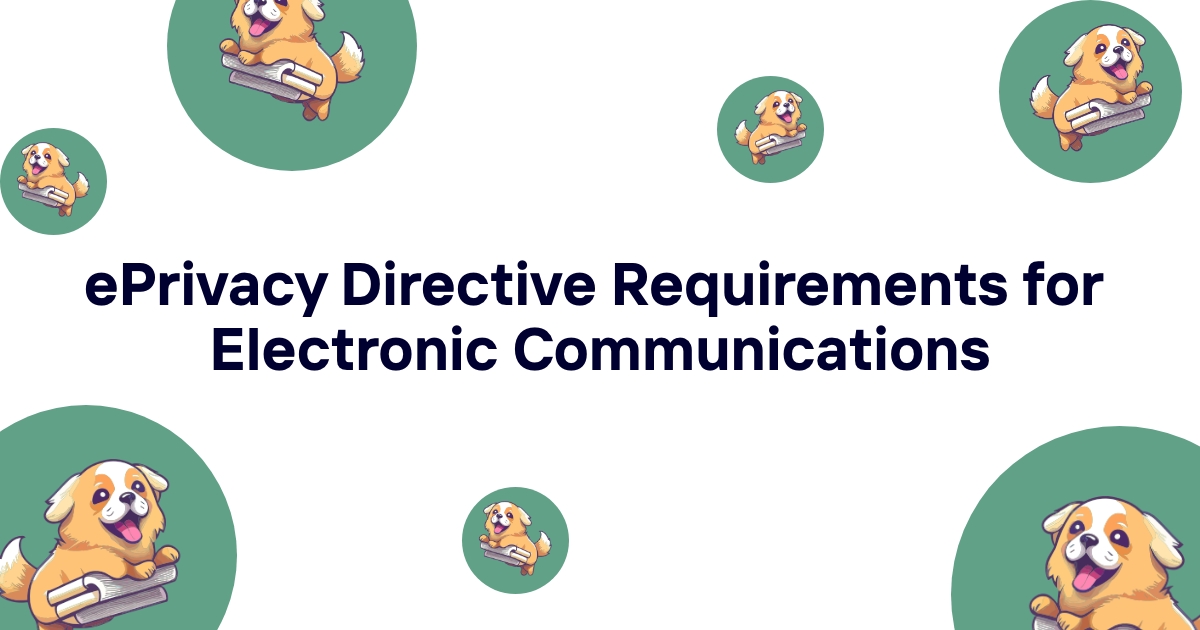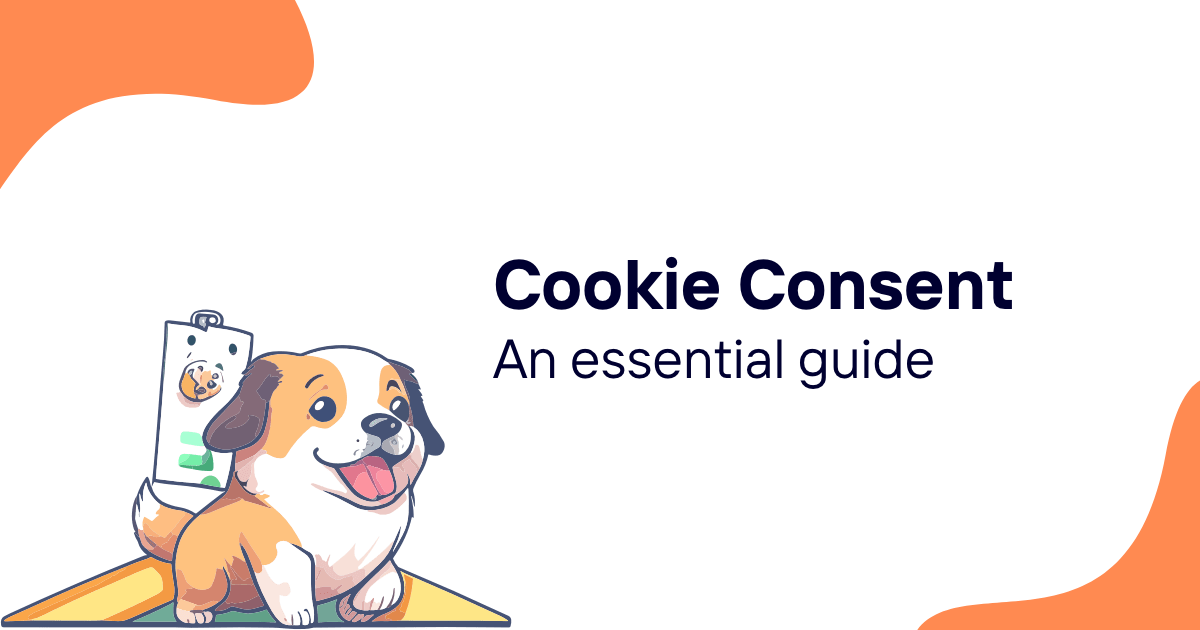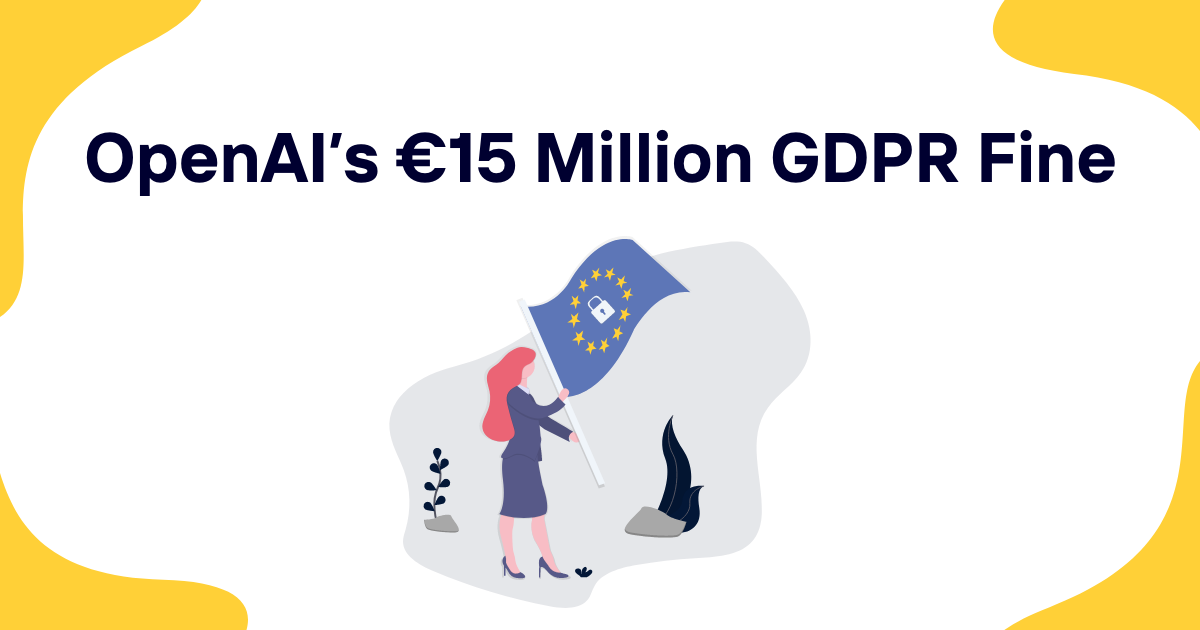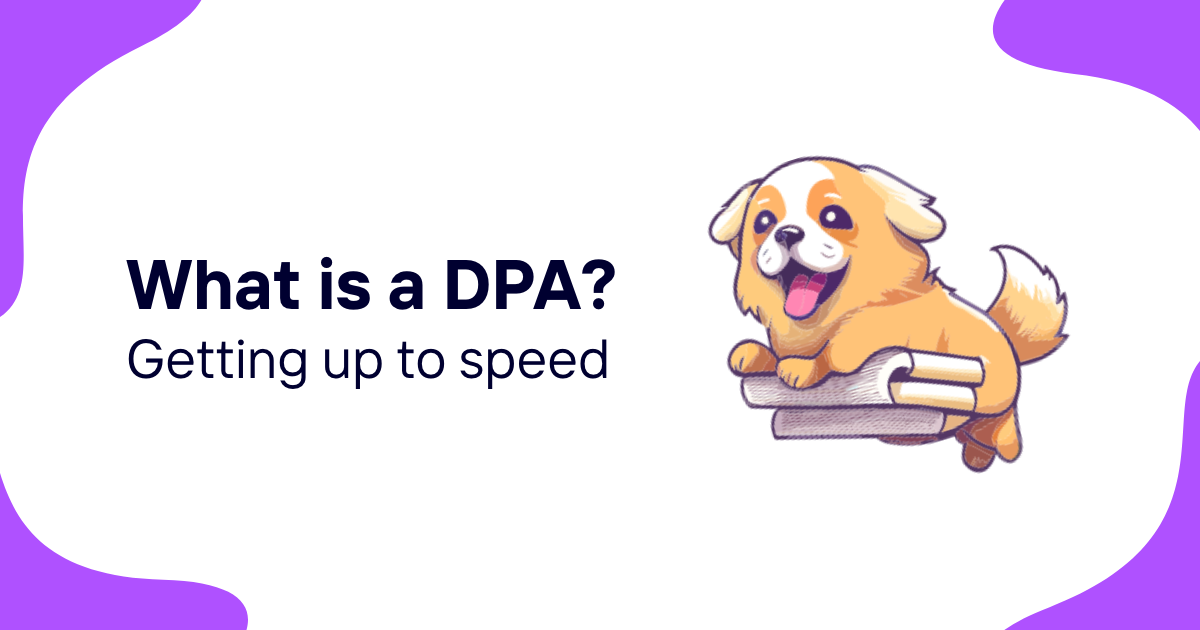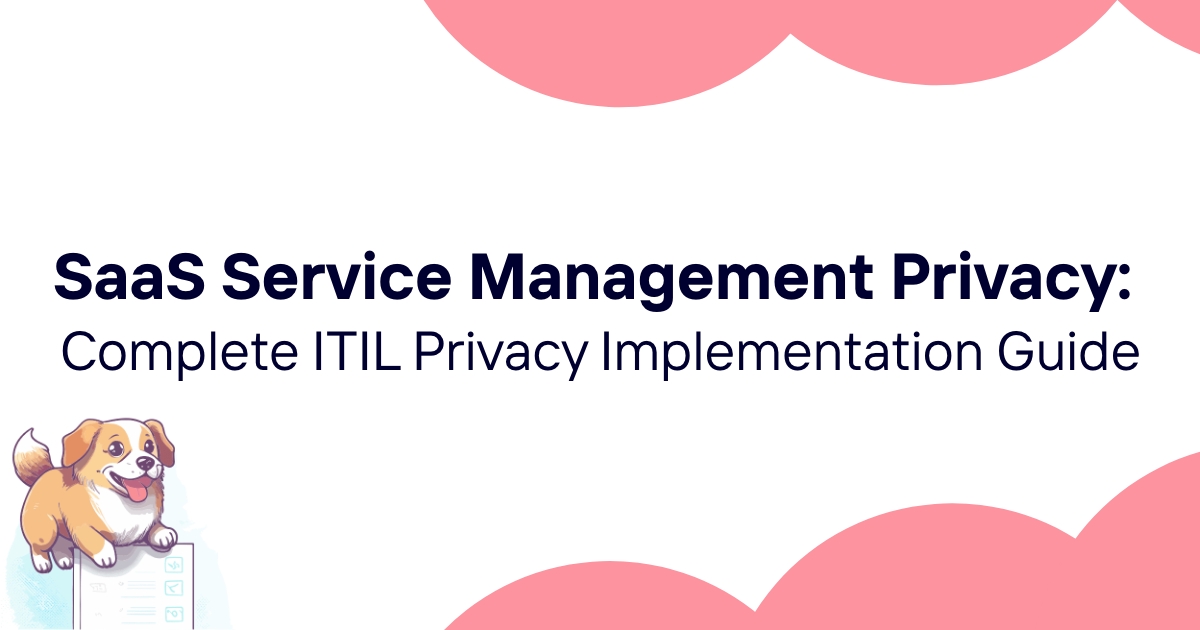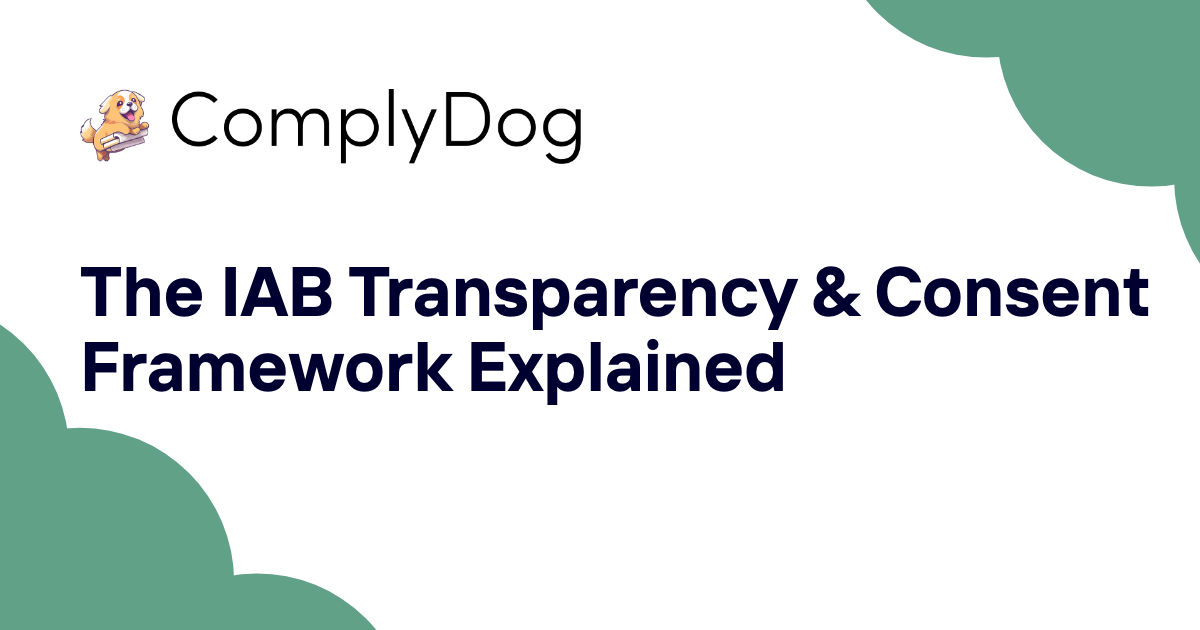The ePrivacy Directive sits at the heart of European digital privacy law, yet many businesses still struggle to understand its scope and requirements. This isn't just another piece of bureaucratic red tape (though it might feel like it when you're clicking through your hundredth cookie banner of the day).
The directive fundamentally shapes how companies handle electronic communications across the EU. From the cookies tracking your online shopping habits to the spam filtering your inbox, this legislation touches virtually every digital interaction.
But here's what makes it particularly interesting: unlike many privacy laws that focus purely on personal data, the ePrivacy Directive casts a much wider net. It protects both individuals and businesses, covering everything from confidential business communications to marketing emails.
Table of contents
- What is the ePrivacy Directive?
- Legal foundation and scope
- Key provisions that shape digital communications
- Cookie consent requirements
- Electronic communications security
- Data retention and traffic information
- Unsolicited electronic communications
- Relationship with GDPR
- Implementation across member states
- Business compliance challenges
- The future: ePrivacy Regulation
- Enforcement and penalties
- Practical compliance strategies
What is the ePrivacy Directive?
The ePrivacy Directive, formally known as Directive 2002/58/EC, regulates privacy and electronic communications throughout the European Union. Think of it as the GDPR's slightly older sibling - similar goals, different approaches.
Adopted in 2002 and significantly amended in 2009, this directive specifically addresses the unique privacy challenges posed by electronic communications technologies. While GDPR focuses on personal data processing broadly, the ePrivacy Directive zeroes in on the communications sector.
The legislation covers several critical areas:
- Confidentiality of electronic communications
- Security requirements for service providers
- Rules for processing traffic and location data
- Restrictions on unsolicited communications (spam)
- Cookie placement and consent requirements
What sets this directive apart is its technology-neutral approach. Rather than targeting specific technologies that might become obsolete, it establishes principles that apply regardless of the underlying technical implementation.
Legal foundation and scope
The directive operates under Article 95 of the Treaty establishing the European Community (now Article 114 TFEU), giving it authority to harmonize laws across member states for internal market purposes.
Its scope extends far beyond individual privacy protection. Article 1(2) explicitly states that the directive applies to both natural and legal persons - meaning businesses receive the same communications privacy protections as individuals.
Geographic and sectoral limitations
The directive doesn't apply to:
- Activities concerning public security and defense
- State security matters
- Criminal law enforcement
- Titles V and VI of the former EU treaty structure
This creates some interesting boundaries. Law enforcement agencies operating under specific legal frameworks can intercept communications, but general business surveillance remains prohibited.
Technology coverage
The directive applies to all forms of electronic communications networks, including:
- Traditional telephone networks
- Internet communications
- Mobile networks
- Satellite communications
- Cable networks
This broad technical scope means new communication technologies automatically fall under the directive's protection framework.
Key provisions that shape digital communications
Security obligations for providers
Electronic communications service providers face mandatory security requirements under Article 4. They must implement appropriate technical and organizational measures to safeguard their services.
When security breaches occur, providers must notify subscribers about specific risks. This requirement predated similar GDPR breach notification rules by several years.
Confidentiality protection
Article 5 establishes a fundamental principle: member states must prohibit listening, tapping, storage, or other interception of communications without user consent.
This creates a presumption of confidentiality for all electronic communications. The default state is privacy, not surveillance.
Exceptions to confidentiality
Limited exceptions exist under Article 15(1) for:
- National security purposes
- Defense requirements
- Public security needs
- Criminal investigation activities
- Unauthorized use prevention
These exceptions must be "necessary, appropriate and proportionate" - a standard that requires careful legal justification.
Traffic data processing rules
Traffic data includes information processed for routing communications, such as:
- Phone numbers dialed
- Duration of calls
- Location information
- IP addresses accessed
- Email routing information
Article 6 requires providers to erase or anonymize traffic data when no longer needed for transmission purposes.
Permitted retention purposes
Limited traffic data retention is allowed for:
- Billing and payment purposes
- Interconnection payments between providers
- Fraud detection and prevention
- Marketing services (with user consent)
The retention period cannot exceed what's necessary for these specific purposes.
Cookie consent requirements
Article 5(3) contains the directive's most visible provision for everyday internet users - the cookie consent requirement that generates those ubiquitous website pop-ups.
The consent framework
The article requires "clear and comprehensive information" about data storage purposes and user consent before storing information on user devices. This applies to:
- HTTP cookies
- Local storage mechanisms
- Flash cookies
- Browser fingerprinting techniques
- Any information stored on or accessed from user devices
Strictly necessary exception
Certain cookies don't require consent if they're "strictly necessary for the delivery of a service requested by the user." Examples include:
- Shopping cart contents
- Session management cookies
- Load balancing cookies
- Security authentication tokens
Implementation variations
Member states have implemented cookie consent requirements differently, creating a patchwork of compliance approaches across the EU.
Some countries allow implied consent through continued browsing, while others require explicit opt-in actions. This inconsistency has complicated multi-jurisdiction compliance efforts.
Electronic communications security
Service providers must implement security measures appropriate to the risks they face. The directive doesn't prescribe specific technical measures but requires risk-based security approaches.
Risk assessment requirements
Providers must evaluate risks including:
- Unauthorized access attempts
- Data integrity threats
- Service availability risks
- Confidentiality breaches
User notification obligations
When particular security risks emerge, providers must inform affected subscribers. This includes risks from:
- Malware infections
- Network vulnerabilities
- Service outages affecting security
- Suspected unauthorized access
Service continuity
Beyond protecting data, providers must ensure service continuity and implement measures to restore services quickly after security incidents.
Data retention and traffic information
The directive establishes strict limits on how long communications data can be retained and for what purposes.
Automatic erasure requirements
Article 6 requires automatic erasure or anonymization of traffic data when it's no longer needed for transmission. This creates a data minimization principle specifically for communications metadata.
Billing exception details
Traffic data can be retained for billing purposes, but only for the duration allowed by national limitation periods for payment recovery. Once bills are paid and any dispute period expires, the data must be deleted.
Location data processing
Article 9 addresses location data with particular care, recognizing its sensitivity for privacy. Processing is only permitted when:
- Data is anonymized
- Users have given specific consent
- Processing supports value-added services
Granular location controls
Users must be able to:
- Grant or withdraw consent for location processing
- Temporarily refuse location processing
- Choose which applications can access location data
Unsolicited electronic communications
Article 13 establishes the legal framework for marketing communications, implementing an opt-in regime that requires prior consent before sending promotional messages.
The opt-in principle
Unsolicited marketing communications are prohibited unless recipients have given prior consent. This applies to:
- Marketing emails
- SMS marketing messages
- Automated calling systems
- Fax marketing
- Other electronic marketing channels
Existing customer exception
A limited exception allows marketing to existing customers if:
- Contact details were obtained during a sale or service negotiation
- Marketing promotes similar products or services
- Customers had an opportunity to opt-out at collection
- Clear opt-out options are provided in each message
Enforcement mechanisms
Member states must establish complaint procedures and ensure adequate sanctions for violations. Many countries have designated specific authorities to handle spam complaints.
Relationship with GDPR
The ePrivacy Directive and GDPR operate as complementary legal frameworks, with the directive providing specialized rules for electronic communications while GDPR establishes general data protection principles.
Overlapping jurisdiction
When electronic communications involve personal data processing, both frameworks may apply. Companies must comply with whichever standard is more restrictive.
GDPR precedence areas
GDPR takes precedence for:
- Individual rights (access, rectification, erasure)
- Data controller/processor obligations
- Cross-border data transfers
- Data protection officer requirements
ePrivacy precedence areas
The directive takes precedence for:
- Communications confidentiality
- Cookie consent requirements
- Electronic marketing rules
- Telecommunications-specific obligations
Consent standard alignment
The 2009 amendments to the ePrivacy Directive attempted to align consent requirements with data protection standards, but some inconsistencies remain between the frameworks.
Implementation across member states
Each EU member state has implemented the directive through national legislation, creating variations in enforcement approaches and penalty structures.
National implementation examples
Germany implemented the directive through the Telecommunications Act (TKG) and the Telemedia Act (TMG), with specific cookie consent requirements and strict email marketing rules.
France takes a particularly strict approach through CNIL enforcement, requiring explicit consent for non-essential cookies and implementing significant penalties for violations.
United Kingdom (pre-Brexit) implemented the directive through the Privacy and Electronic Communications Regulations (PECR), which continue to influence UK privacy law post-Brexit.
Enforcement variations
Different member states have chosen different enforcement approaches:
- Some focus primarily on cookie consent violations
- Others prioritize email marketing compliance
- Several emphasize telecommunications security requirements
Business compliance challenges
Companies operating across multiple EU jurisdictions face complex compliance requirements due to implementation variations and overlapping regulatory frameworks.
Multi-jurisdiction complexity
A company with users across the EU must navigate:
- Different cookie consent implementations
- Varying email marketing requirements
- Distinct enforcement priorities
- Multiple regulatory authorities
Technical implementation challenges
Compliance often requires:
- Geolocation-based consent management
- Multi-language privacy interfaces
- Complex data retention policies
- Integrated GDPR and ePrivacy controls
Resource allocation
Smaller companies particularly struggle with compliance costs, as implementing comprehensive privacy controls across multiple jurisdictions requires significant technical and legal resources.
The future: ePrivacy Regulation
The European Commission has proposed replacing the directive with an ePrivacy Regulation, which would create directly applicable rules without requiring national implementation.
Proposed changes
The draft regulation would:
- Extend protection to over-the-top communication services
- Harmonize enforcement across member states
- Align more closely with GDPR principles
- Strengthen consent requirements for cookies
Implementation delays
The regulation's implementation has faced repeated delays due to:
- Industry lobbying concerns
- Member state disagreements
- Technical complexity issues
- Brexit-related complications
Current status
As of late 2024, the regulation remains under negotiation, with no definitive implementation timeline. The directive continues to govern electronic communications privacy in the interim.
Enforcement and penalties
Enforcement mechanisms and penalty levels vary significantly across member states, creating an uneven compliance landscape.
Penalty structures
| Country | Maximum Fine | Enforcement Authority |
|---|---|---|
| Germany | €300,000 | Federal Network Agency |
| France | €20 million | CNIL |
| Ireland | €5 million | Data Protection Commission |
| Netherlands | €900,000 | Authority for Consumers and Markets |
Notable enforcement actions
Several high-profile enforcement actions have shaped compliance practices:
- Google faced multiple cookie consent violations across several member states
- Telecommunications providers have been fined for security breaches
- Email marketing violations regularly result in significant penalties
Compliance monitoring
Regulators use various monitoring approaches:
- Automated scanning for cookie compliance
- Complaint-based investigations
- Regular audits of telecommunications providers
- Cross-border cooperation mechanisms
Practical compliance strategies
Companies can implement several strategies to address ePrivacy Directive requirements effectively while managing compliance costs.
Cookie management approach
Implement a comprehensive cookie management system that:
- Categorizes cookies by purpose and necessity
- Provides granular consent options
- Maintains consent records
- Supports easy withdrawal mechanisms
Technical implementation
- Use consent management platforms (CMPs) that support multiple jurisdictions
- Implement cookie-less analytics where possible
- Design privacy-friendly alternatives to tracking technologies
- Regular audit cookie usage across web properties
Email marketing compliance
Develop robust email marketing practices:
- Implement double opt-in procedures for new subscribers
- Maintain detailed consent records with timestamps
- Provide clear unsubscribe mechanisms in every message
- Regular clean email lists to remove inactive addresses
Data retention policies
Create clear data retention schedules that:
- Specify retention periods for different data types
- Implement automated deletion procedures
- Document business justifications for retention
- Regular review and update retention requirements
Security measures
Implement appropriate security controls:
- Regular security assessments for communications systems
- Incident response procedures for security breaches
- User notification systems for security risks
- Staff training on confidentiality requirements
Companies seeking to simplify their ePrivacy Directive compliance can benefit from comprehensive privacy management platforms. Modern compliance software like ComplyDog provides integrated solutions that address both GDPR and ePrivacy requirements through automated consent management, data mapping, and retention scheduling. These tools help businesses maintain compliance across multiple jurisdictions while reducing the administrative burden of manual privacy management processes. Visit ComplyDog.com to learn how automated compliance tools can streamline your privacy obligations and reduce regulatory risks.
